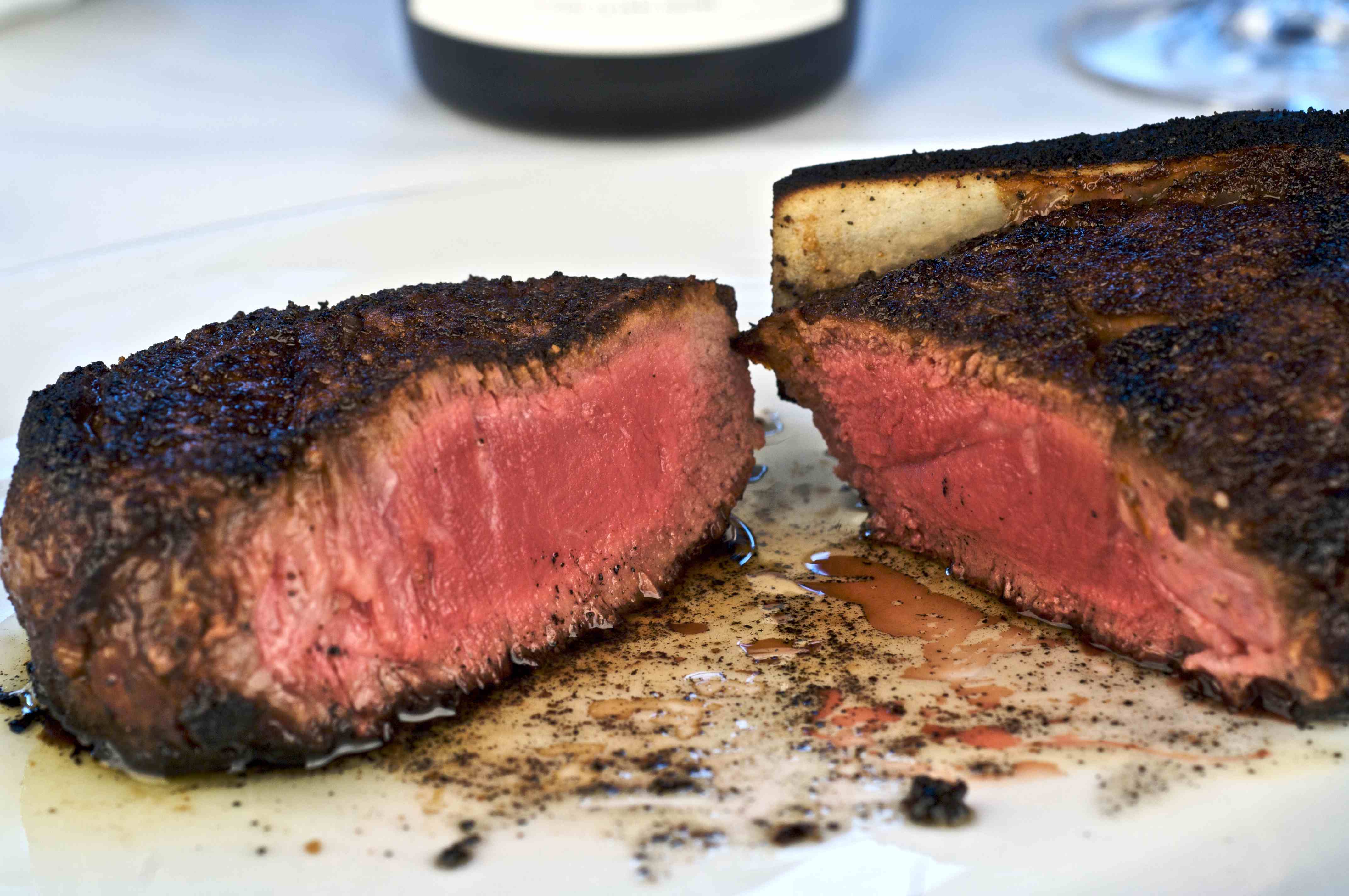Buying Beef

When I wrote the Certified Angus Beef history book, I learned the meat counter guys knew about as much as the store stockers. Unless you have a trusted old school butcher, don’t bother asking those counter guys anything. I once overhead a chain store meat service fella explain that baby back pork ribs came from younger pigs. Yeah, not true. Baby back ribs are the meaty section cut from the lower back rib. Anyway, these tips will help you buy the best cut of meat.
USDA Choice
USDA Choice is the second highest grade, but the marbling quality is broken up into three marbling categories: moderate, modest and small.

A small-marbling steak contains half the marbling of a moderate one. But, if you’re just shopping by labels, you’ll never know the difference.
In a moderately marbled steak, the white flecks of fat should cover 7 to 8 percent of the surface. Modest marbling represents 5 to 7 percent and small marbling covers 4 to 5 percent.
When shopping, cull the steaks with less intramuscular fat. Pick out the top three or four marbling steaks and with your fingernails or keys measure the distance between the white flecks. The ones where the fat is thicker and closer together will consistently perform better.
Some branded beef programs save you the trouble. Sterling Silver and Certified Angus Beef are among the brands that allow only the upper two-thirds of Choice.
Tenderness Scale
We’ve all poked the package to gauge the meat’s tenderness. That might not be necessary.
Meat scientists—yes, there are such things as meat scientists—conduct shear force tests to learn how many pounds of pressure it takes to cut into certain muscles. According to the National Beef Tenderness Survey, beef cuts shear force testing (pounds): Top Loin, 4.7; Bone-In Top Loin, 4.7; Bone-In Ribeye, 4.8; T-Bone, 5.0; Porterhouse, 5.1; Ribeye, 5.2; Top Sirloin, 5.5; Clod, 6.2; Top Round, 6.7; Eye of Round, 7.5; Bottom Round, 8.1
Grain-Fed vs. Grass-Fed Beef

What’s the optimal way to raise cattle—grass or grain fed? This topic has been known to start quite a few arguments in cattle sale barns. Both philosophies create delicious red meat worthy of your fork.
For corn-fed steak, I coat it with olive oil, add salt and pepper, garlic powder, rub in a clove of garlic and broil that puppy on both sides until the edged fat is crispy brown. This high heat turns the marbling into mouthwatering natural juices.
Because grass-fed beef consistently contain less marbling, I cook grass-fed slower. The muscle fibers need more time to break down. I especially like to make Beef Bourguignon, beef stews and braised short ribs—dishes that reward your patience.
Real Angus
You know the Angus burger you had at your fast-food place? Yeah, it probably did not come from an Angus steer.
While the fast-food meat may have been USDA Inspected, which means it was inspected for food safety, no USDA grader has certified their ground beef as coming from an Angus animal. Just like they certify organic products, USDA officials certify beef programs.
In 1978, Certified Angus Beef became the first certified branded beef program and remains the only program owned by the American Angus Association’s cattle producers.
Since then, the market has been flooded with other Angus certification programs that require the USDA verify the animal’s phenotype.
But, several USDA Angus programs do not require phenotype or genotype verification.
So you might be enjoying a so-called Angus steak with USDA certification that’s not even from an Angus animal.
Love and Science
Like vintners, cattle breeders spend a painstaking amount of time and money trying to deliver a product you desire.
Japanese farmers massage their Wagyu cattle, ensuring future Kobe steaks are tender, rich and fatty.
American cattlemen conduct ultrasound scans for marbling and use DNA markers to select breeding stock. They collect carcass marbling data from a sire’s offspring to learn what bulls produce more USDA Prime.
Truthfully, your odds of enjoying a thick juicy steak are better today than other time in history.
Bon Apameat!
Note: Portions of this story appeared in the December 2010 issue of Wine Enthusiast.








